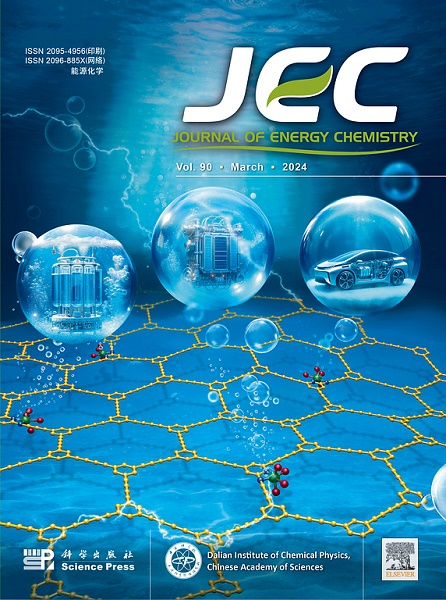2D/3D heterojunction carrier dynamics and interface evolution for efficient inverted perovskite solar cells
IF 13.1
1区 化学
Q1 Energy
引用次数: 0
Abstract
The 2D/3D heterojunction perovskites have garnered increasing attention due to their exceptional moisture and thermal stability. However, few works have paid attention to the influence of the subsequent change process of 2D/3D heterojunction PSC on the stability of PSCs. Moreover, the evolution of the interface and carrier dynamic behavior of the 2D/3D perovskite films with long-term operation has not been systematically developed before. In this work, the effects of 2D/3D heterojunction evolution on the interface of perovskite films and different carrier dynamics during 2D/3D evolution are systematically analyzed for the first time. The decomposition of 2D/3D heterojunction in the perovskite film will have a certain impact on the surface and carrier dynamics behavior of perovskite. During the evolution of 2D/3D heterojunction, PbI2 crystals will appear, which will improve the interfacial energy level matching between the electron transport layer and perovskite film. With a long evolution time, some holes will appear on the surface of perovskite film. The open circuit voltage (VOC) of PSCs increased from 1.14 to 1.18 V and the PCE increased to 23.21% after 300 h storage in the nitrogen atmosphere, and maintained 89% initial performance for with 3000 h stability test in N2 box. This discovery has a significant role in promoting the development of inverted heterojunction PSCs and constructing the revolution mechanism of charge carrier dynamic.

求助全文
约1分钟内获得全文
求助全文
来源期刊

Journal of Energy Chemistry
CHEMISTRY, APPLIED-CHEMISTRY, PHYSICAL
CiteScore
19.10
自引率
8.40%
发文量
3631
审稿时长
15 days
期刊介绍:
The Journal of Energy Chemistry, the official publication of Science Press and the Dalian Institute of Chemical Physics, Chinese Academy of Sciences, serves as a platform for reporting creative research and innovative applications in energy chemistry. It mainly reports on creative researches and innovative applications of chemical conversions of fossil energy, carbon dioxide, electrochemical energy and hydrogen energy, as well as the conversions of biomass and solar energy related with chemical issues to promote academic exchanges in the field of energy chemistry and to accelerate the exploration, research and development of energy science and technologies.
This journal focuses on original research papers covering various topics within energy chemistry worldwide, including:
Optimized utilization of fossil energy
Hydrogen energy
Conversion and storage of electrochemical energy
Capture, storage, and chemical conversion of carbon dioxide
Materials and nanotechnologies for energy conversion and storage
Chemistry in biomass conversion
Chemistry in the utilization of solar energy
 求助内容:
求助内容: 应助结果提醒方式:
应助结果提醒方式:


